Are you ready to introduce your child to a world of magic and wisdom? Let us venture through this enchanting realm with a summary of Panchatantra stories in English, where young minds are enriched, their characters nurtured, and lifelong values are instilled.
In this article, we will unveil the captivating power of Panchatantra stories in English, know how they can shape your child’s character, nurture their creativity, and instil vital life lessons. Let us give your child the gift of stories that not only entertain but also equip them for a brighter future.
Panchatantra stories are not just words on pages; they are guiding stars in your child’s journey towards becoming a compassionate and wise individual.
What is Panchatantra?
Before we delve into the treasure trove of Panchatantra stories, let’s answer the fundamental question: What is Panchatantra?
Panchatantra, often hailed as one of the world’s oldest collections of fables, is an ancient Indian text written over two millennia ago. Comprising five books, each with its unique collection of stories, the Panchatantra imparts valuable life lessons through the art of storytelling.
What is the meaning of Panchatantra?
The term ‘Panchatantra’ itself has a fascinating meaning – ‘Pancha’ means ‘five,’ and ‘Tantra’ means ‘treatise.’ So, the Panchatantra is essentially a ‘Five Treatise Book.’ This narrative masterpiece is designed to entertain, educate, and enlighten, making it the perfect source of moral stories for kids.
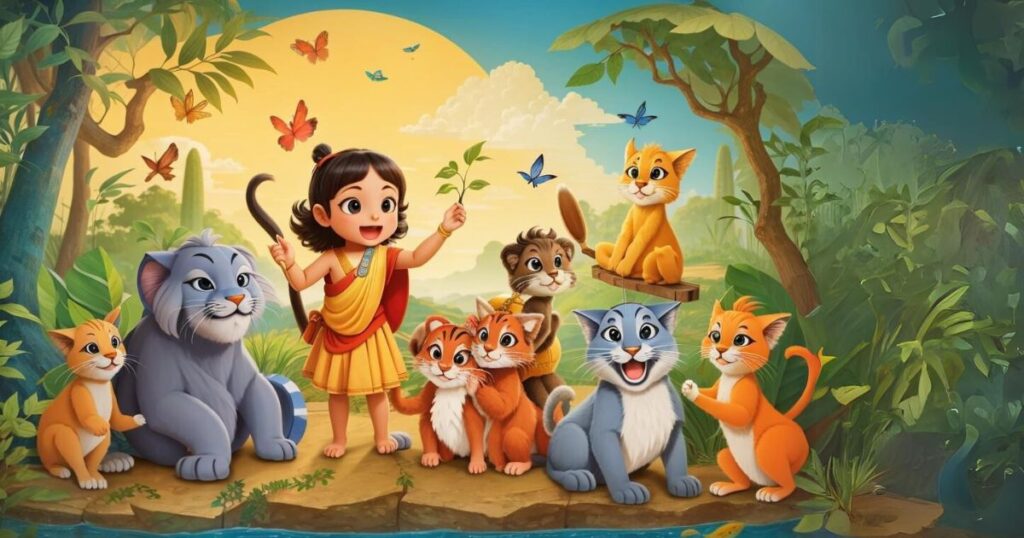
Who Wrote Panchatantra?
The origin of the Panchatantra is a tale as intriguing as the stories it holds. This timeless collection of fables finds its roots in ancient India, with a history spanning over two millennia.
At the heart of these captivating narratives is the legendary sage Vishnu Sharma, who penned these tales for a very specific purpose.
Vishnu Sharma’s ingenious creation has transcended time, culture, and generations, continuing to captivate the young and young at heart, making him an author whose legacy endures through these cherished tales of wisdom and wonder.
Why Were Panchatantra Stories Written?
In his role as a highly respected educator, Vishnu Sharma was given this monumental task by King Amara Shakti. The Panchatantra was written for a specific purpose: to educate three young princes in the principles of kingship and wise governance.
However, he knew that didactic lectures and lengthy discourses wouldn’t engage his royal pupils effectively. So, he wove a tapestry of stories, each concealing a profound moral lesson within its narrative. These tales, written in the Sanskrit language, were designed not just to educate but to entertain and enlighten.
These stories served as a mentor and guide for the royal heirs, teaching them essential lessons that extended far beyond the realm of politics. The timeless tales of the Panchatantra reveal the secrets of navigating life’s complexities, managing relationships, and making sound decisions.
The Five Books of Panchatantra
Each book in the Panchatantra has its own unique charm and valuable lessons. Let’s learn what these 5 books of Panchatantra have to offer.
1. Mitra Bheda (The Separation of Friends)
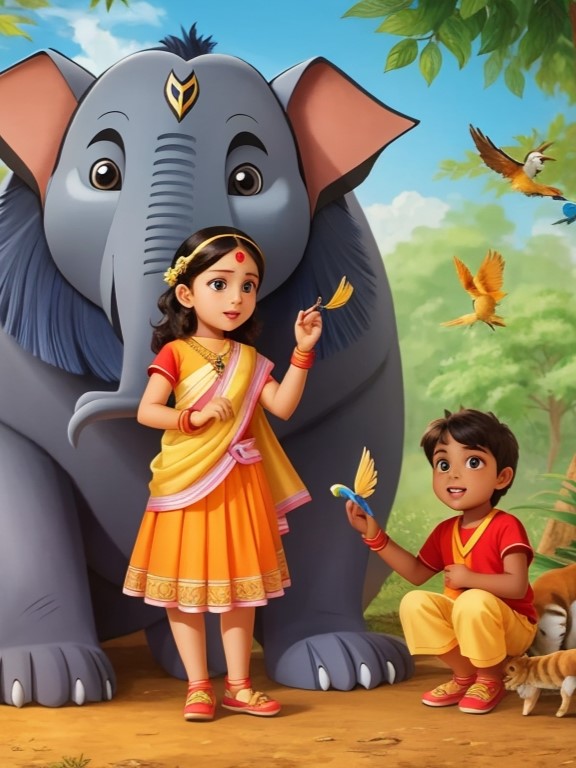
In “Mitra Bheda,” the first book of the Panchatantra, we encounter a heart-warming story of two friends.
These two friends lived in a dense forest, sharing everything from stories to food. However, their idyllic friendship faced an unexpected challenge when a cunning hunter entered their world.
The hunter’s net symbolised betrayal, cunning, and treachery, tearing apart the once-unbreakable bond of friendship between the sparrows.
Young readers will empathize with two friends as they navigate the harsh realities of the forest and learn about trust, unity, and the consequences of hasty decisions. This story, like all others in the Panchatantra, is a source of valuable lessons.
📢 It emphasizes the importance of friendship and the need to be cautious when faced with challenges.
2. Mitra Labha (The Gaining of Friends)
In “Mitra Labha,” the second book of the Panchatantra, the story unfolds in a bustling town. Here, we meet two central characters, Damanaka, a clever jackal, and Karataka, a wise owl.
This story takes young readers on an adventure where intelligence and compassion triumph over seemingly insurmountable obstacles.
Damanaka and Karataka teach us that forming alliances and friendships is not solely based on physical strength but also intelligence and compassion. Their tale of unity and wit is a shining example of how two very different creatures can work together to overcome adversity.
The lessons from “Mitra Laabha” inspire kids to appreciate the importance of building strong and enduring friendships.
📢 Through engaging dialogues and vivid storytelling, young readers are introduced to the concept that wisdom and resourcefulness can help us outwit even the most formidable opponents.
3. Kakolukiyam (Crows and Owls)
“Kakolukiyam,” the third book of the Panchatantra, presents an intriguing world where cunning crows and powerful owls coexist. In this enthralling narrative, Brahmadatta, a brave and clever crow, emerges as a hero.
The story revolves around Brahmadatta’s determination to bring peace between two feuding species, the crows and the owls. Through wit and diplomacy, Brahmadatta bridges the gap, teaching young readers the significance of peaceful coexistence and the power of negotiation.
Kids will be drawn into this enchanting tale as they learn that conflicts can be resolved through clever thinking and cooperation, rather than resorting to aggression.
📢 The story of Brahmadatta and the feuding birds encourages young minds to appreciate the value of unity and diplomacy in resolving disputes.
4. Labdhapranasam (Loss of Gains)
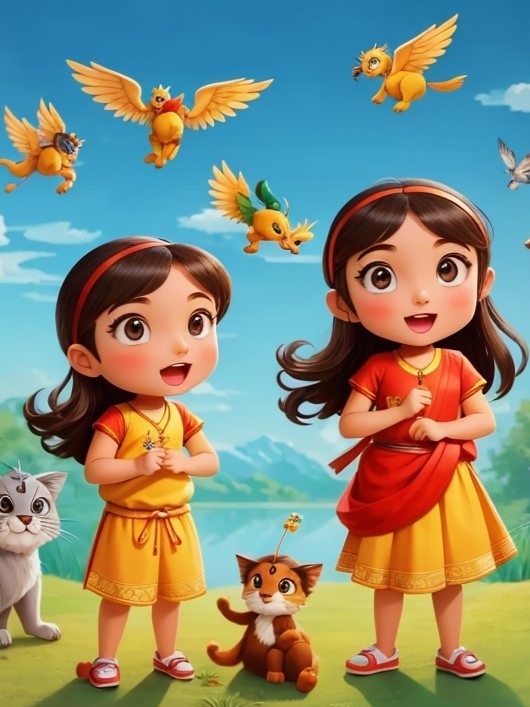
In the fourth book of the Panchatantra, “Labdhapranasam,” the focus shifts to the consequences of thoughtless actions and the perils of greed.
The story is set in a vibrant marketplace, where a foolish merchant named Suka learns a valuable lesson the hard way. Suka’s insatiable greed and impulsive decisions lead to the loss of his riches.
This cautionary tale teaches children the importance of contentment and responsible decision-making. Suka’s journey serves as a vivid illustration of how greed can blind us to the value of what we already possess, ultimately leading to our downfall.
Young readers will find themselves in Suka’s shoes, and through his story, they’ll grasp the significance of being satisfied with what they have and making choices based on wisdom rather than impulsivity.
📢 "Labdhapranasam" is a story that leaves a lasting impression, encouraging children to be content and make informed decisions.
5. Aparikshita Karakam (Rash Actions)
“Aparikshita Karakam,” the fifth and final book of the Panchatantra, unfolds in a peaceful kingdom ruled by a wise king named Amarashakti. However, the king’s impulsive actions set the stage for a tale of caution and learning.
Through a sequence of unfortunate events stemming from the king’s rash decisions, young readers are shown that every action has consequences.
The story emphasizes the importance of thinking before acting and considering the potential outcomes of one’s decisions.
Amarashakti’s experiences serve as a powerful reminder that even leaders can make mistakes. The wise minister’s counsel and the king’s eventual realization of his errors offer children a valuable lesson in humility, responsibility, and the ability to correct one’s actions.
The story encourages them to approach life’s challenges with thoughtfulness and wisdom.
📢 In "Aparikshita Karakam," kids learn that it's never too late to make amends and learn from their mistakes.
A brief summary of Panchatantra Stories in English
The beauty of Panchatantra stories for kids lies not just in their captivating narratives but also in the timeless moral lessons they impart. Through these tales, kids can learn important values like friendship, wisdom, compassion, and prudence.
These stories are often delivered in a first or third-person narrative style, making them relatable and engaging for children. Let’s explore the transformation these stories offer.
Why Panchatantra Stories Are Perfect for Kids
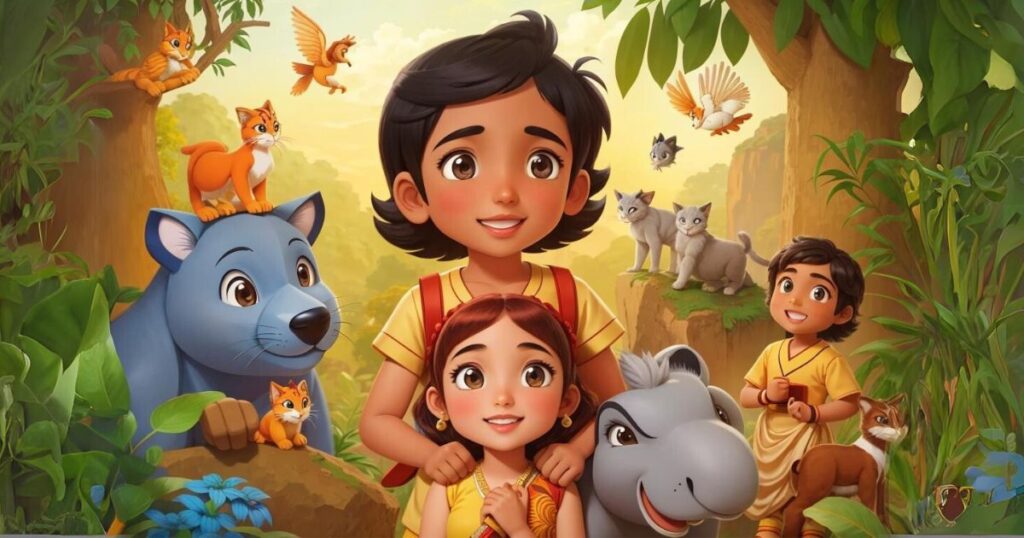
1. Captivating Narratives
At the heart of every Panchatantra story lies a captivating narrative that draws children into a world where animals talk, and characters embark on thrilling adventures.
These stories are filled with suspense, excitement, and humour, making them irresistible to kids. The imaginative storytelling style of the Panchatantra not only keeps children engaged but also kindles their curiosity and creativity.
2. Life Lessons in Disguise
Panchatantra stories are designed to deliver essential moral lessons cleverly and unobtrusively. Rather than presenting didactic lectures, these fables wrap their wisdom in the cloak of entertainment.
The characters in these stories face dilemmas, make choices, and experience the consequences, allowing young readers to internalize the lessons without feeling like they’re being taught.
3. Fostering Empathy
Through the journeys of talking animals and diverse characters, Panchatantra stories provide a window into different perspectives and experiences. Kids naturally empathize with these fictional beings, gradually developing a deeper understanding of empathy.
As they follow the triumphs and trials of the characters, they learn to appreciate the value of compassion and consideration for others.
4. Encouraging Critical Thinking
Panchatantra stories invite children to ponder over the decisions and actions of the characters. This encourages critical thinking and the development of problem-solving skills.
As they navigate the moral dilemmas presented in the stories, kids begin to apply the same critical thinking to real-life situations, making wise choices as they grow.
5. Moral Ambiguity and Complex Characters
In the Panchatantra, not everything is black and white. The characters often grapple with moral ambiguity, just like people do in real life.
This helps children understand that the world is not always simple, and decision-making can be a nuanced process. The multi-dimensional characters in these stories teach kids to appreciate the complexity of human nature.
6. Encouraging Dialogue
Panchatantra stories frequently feature dialogues and discussions among the characters. These exchanges encourage children to express their thoughts and feelings and engage in meaningful conversations with parents or guardians.
Kids can seek guidance and clarification through these dialogues, deepening their comprehension of the stories’ underlying lessons.
7. Building Cultural Awareness
These timeless tales provide a window into the cultural and historical tapestry of India. They introduce children to the rich heritage and traditions of this ancient land. This cultural awareness fosters respect for diversity and a broader perspective on the world.
In a world inundated with technology and distractions, Panchatantra stories offer a sanctuary of wisdom, delivered in an enchanting, age-old storytelling format. The lessons learned from these stories are not confined to childhood but serve as a compass for navigating the complexities of life in adulthood.
Panchatantra stories, with their captivating narratives and profound insights, are more than stories; they are life’s guiding stars, illuminating the path to wisdom and character for generations of young readers. So, let these tales light up the hearts and minds of your children, leading them on a journey of enlightenment, one story at a time.
FAQs About Panchatantra Stories for Kids
1. What is the Panchatantra and its significance for kids?
The Panchatantra is an ancient collection of fables that imparts valuable life lessons through storytelling. It’s significant for kids because it presents moral lessons in an engaging and relatable manner, making learning fun.
2. Who wrote the Panchatantra stories?
The Panchatantra stories were written by the legendary sage Vishnu Sharma, who crafted these tales to educate young princes in the principles of wise governance and life.
3. Are Panchatantra stories suitable for young children?
Yes, Panchatantra stories are suitable for young children. They are crafted with a narrative style and language that engage kids, making them an excellent choice for imparting essential life values.
4. Can I find full versions of Panchatantra stories in English?
Yes, full versions of Panchatantra stories in English are readily available, making it easy for parents to use these stories to entertain their children while teaching them valuable life lessons.
5. Are there short versions of Panchatantra stories for bedtime storytelling?
Yes, there are short versions of Panchatantra stories that are perfect for bedtime storytelling. These brief narratives ensure that kids remain engaged and absorb important lessons without losing interest. Here is a popular one, “Animal Tales from India: Ten Stories from the Panchatantra by Nikita Gill (Author), Chaaya Prabhat (Illustrator)”
6. What are some popular Panchatantra stories with moral lessons in English?
Some popular Panchatantra stories are from the chapters, “The Separation of Friends,” “The Gaining of Friends,” “Crows and Owls,” “Loss of Gains,” and “Rash Actions.” Each story offers unique moral lessons.
7. How do Panchatantra stories help children develop character and values?
Panchatantra stories help children develop character and values by presenting moral lessons in relatable and engaging narratives. They nurture wisdom, kindness, integrity, and creativity in young minds.
8. Can Panchatantra stories foster empathy in children?
Yes, Panchatantra stories often feature talking animals and characters, encouraging children to empathize with others and consider different perspectives, making them a valuable tool for fostering empathy.
9. What’s the origin and meaning of the term ‘Panchatantra’?
The term ‘Panchatantra’ means ‘Five Treatise Book.’ It has its origins in ancient India and signifies a collection of five books, each containing a unique set of stories aimed at imparting wisdom.
As we come to the end of this interesting read about “A Summary of Panchatantra Stories in English to Inspire Kids”, a combination of these captivating stories, and transformative lessons aims to provide a comprehensive and engaging resource for young parents and their children. It helps them embark on a journey of wisdom and character through the timeless tales of the Panchatantra.
Hungry to read more? Check these out:
Indian Bedtime Stories for Kids: Nurturing Imagination and Joy

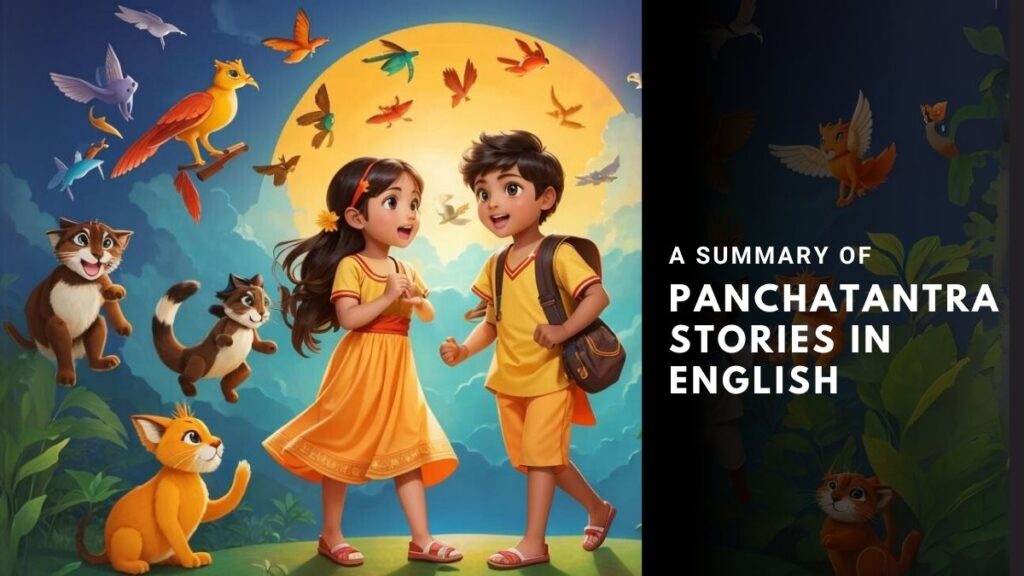

2 thoughts on “A Summary of Panchatantra Stories in English to Inspire Kids”
This article reminded me of my childhood days, when I used to watch “Panchatantra” stories on TV on Sunday mornings.
Aww! Some real sweet memories, indeed!
Comments are closed.